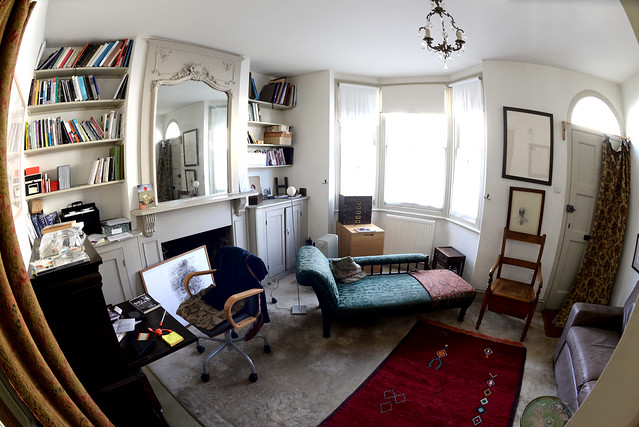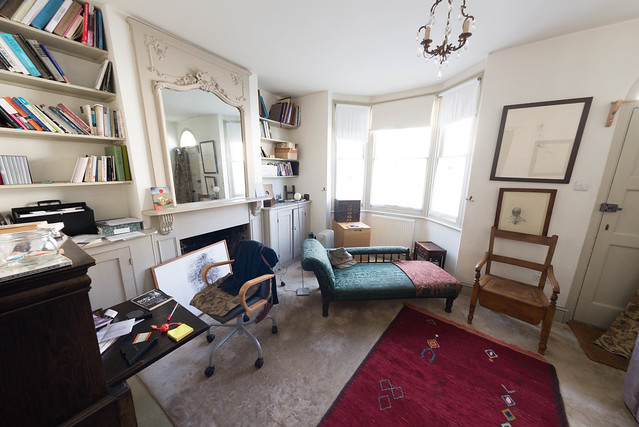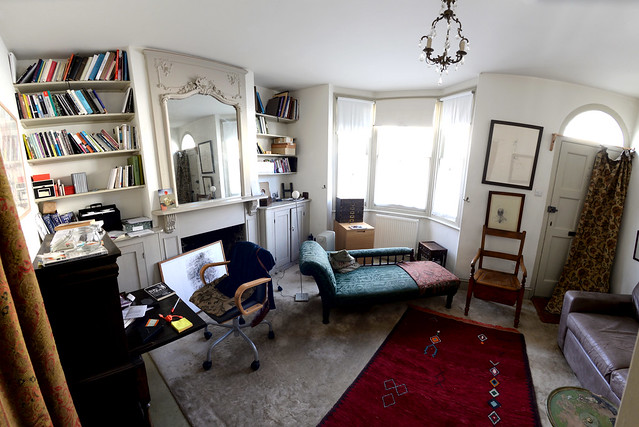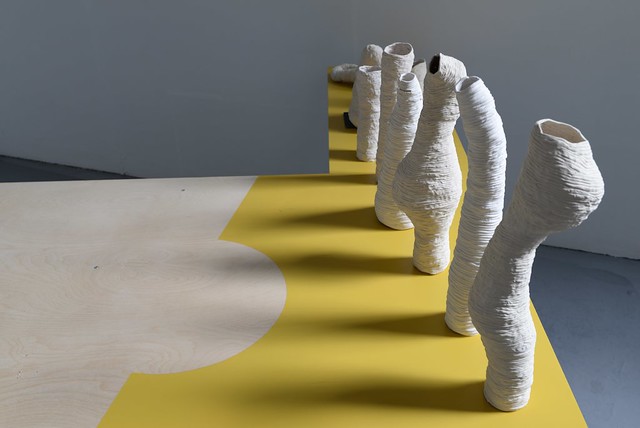Now I’m back from my trip I can return to geekery. My lens collection for my camera is growing. I have just got a fisheye lens. I bought it on Ebay on an impulse. When I won it I wished I hadn’t bid on it, however, now its here I intend to make the most of it. Its a Nikkor 16mm AF D lens for those in the know. Unlike the ghastly gimmicky 1970s fish eyes, this lens fills the whole frame with an image, not just a circle in the middle. The question then is how to convert what should be projected onto a curved surface onto a flat film – or rather computer screen. As with maps of the world there is more than one way of doing it. And in fact, some come free(ish) and some you have to shell out for.
Here is pretty much what comes out of the camera:

Its a reasonably sharp lens though has noticeable chromatic aberration (corrected I think in this shot) but I find the curved uprights quite nightmarish. Its amazing, for such a physically small lens it really sees 180 degrees.
Adobe Lightroom comes with a vast database of lens characteristics built in that can correct their characteristic distortion. For most lenses this is mild and it works well. This is what it does for this lens.

Its ok. Its a real relief to not be living in the LSD world of the first picture but the corners are really stretched and lose definition. Also it crops out quite a lot of the image, so the wide view is rather wasted.
Now here is what the hemi fisheye plug in produces:

Its an odd perspective. You can tell that the way it remaps the image varies across it. But it produces the best image. It is much sharper at the corners and does not lose any of the image. So, the £25 that it cost – the plug in that is, not the lens – is worth it. It makes the lens a useable ultra-wide angle lens rather than a novelty that you quickly tire of.
This is what it looks like, courtesy of Mr Rockwell:

Before this, I bought, also on Ebay, a more conventional lens, Nikon’s 35mm f1.4 lens, which is much easier to use. this is what it does:












